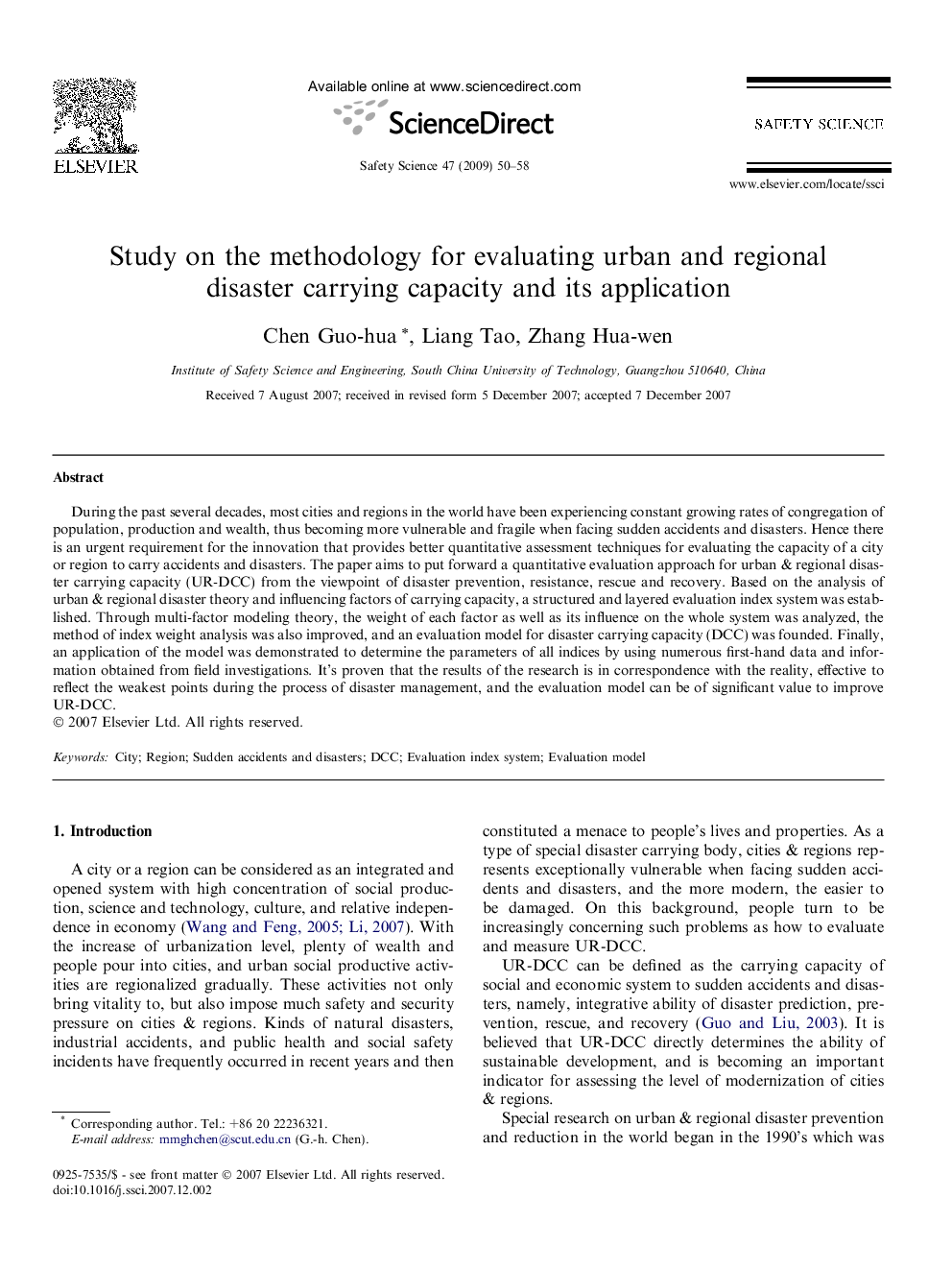| Article ID | Journal | Published Year | Pages | File Type |
|---|---|---|---|---|
| 590205 | Safety Science | 2009 | 9 Pages |
During the past several decades, most cities and regions in the world have been experiencing constant growing rates of congregation of population, production and wealth, thus becoming more vulnerable and fragile when facing sudden accidents and disasters. Hence there is an urgent requirement for the innovation that provides better quantitative assessment techniques for evaluating the capacity of a city or region to carry accidents and disasters. The paper aims to put forward a quantitative evaluation approach for urban & regional disaster carrying capacity (UR-DCC) from the viewpoint of disaster prevention, resistance, rescue and recovery. Based on the analysis of urban & regional disaster theory and influencing factors of carrying capacity, a structured and layered evaluation index system was established. Through multi-factor modeling theory, the weight of each factor as well as its influence on the whole system was analyzed, the method of index weight analysis was also improved, and an evaluation model for disaster carrying capacity (DCC) was founded. Finally, an application of the model was demonstrated to determine the parameters of all indices by using numerous first-hand data and information obtained from field investigations. It’s proven that the results of the research is in correspondence with the reality, effective to reflect the weakest points during the process of disaster management, and the evaluation model can be of significant value to improve UR-DCC.
